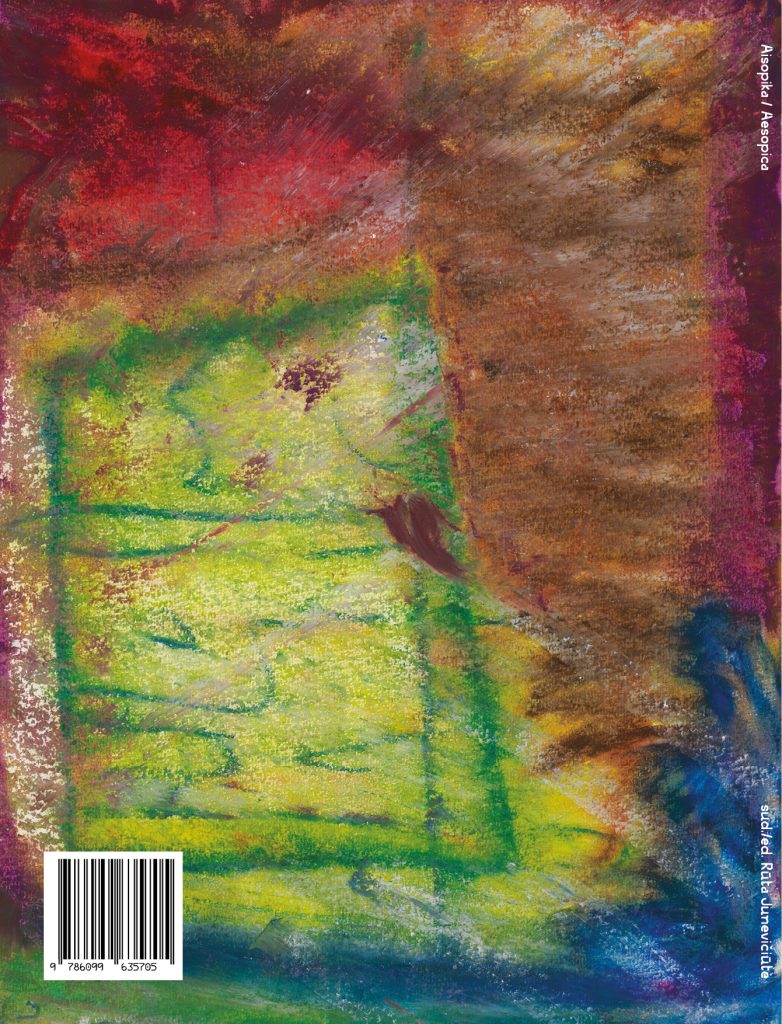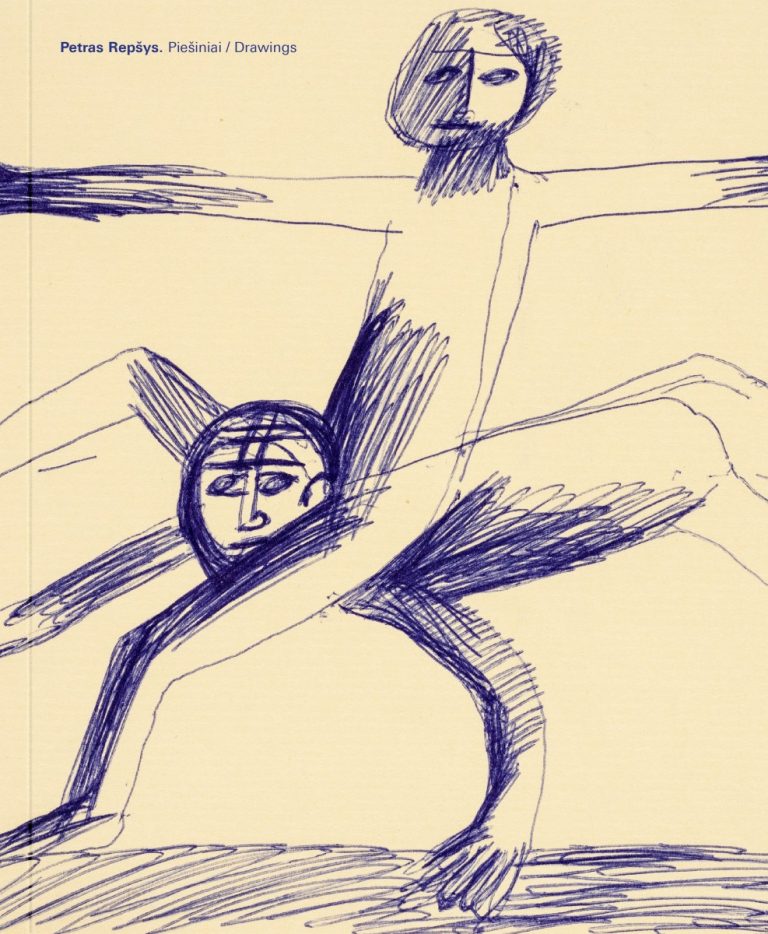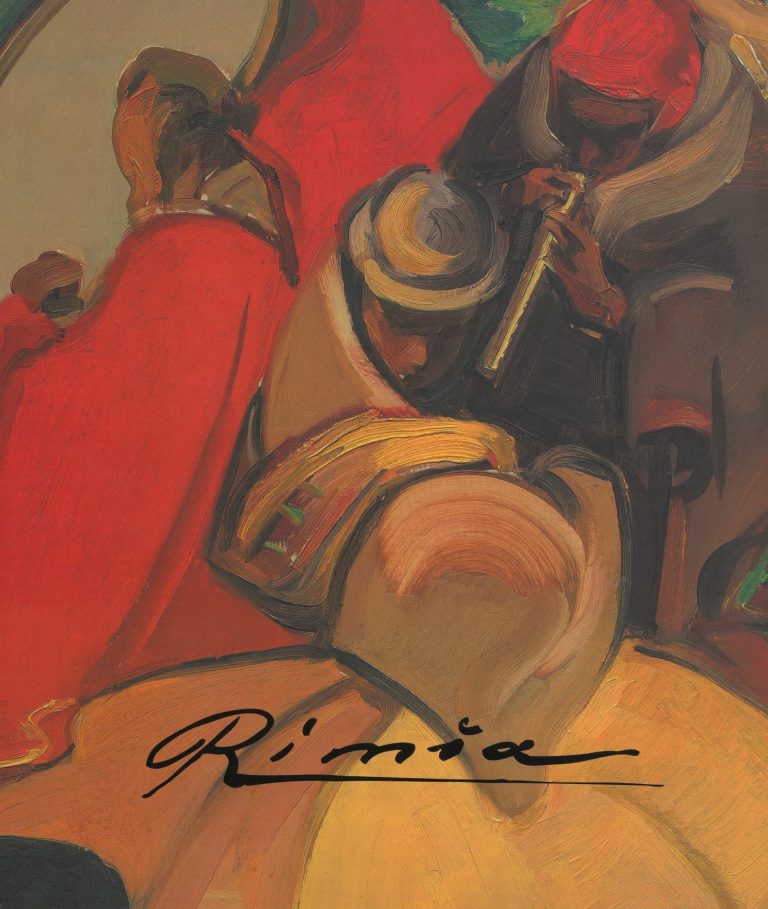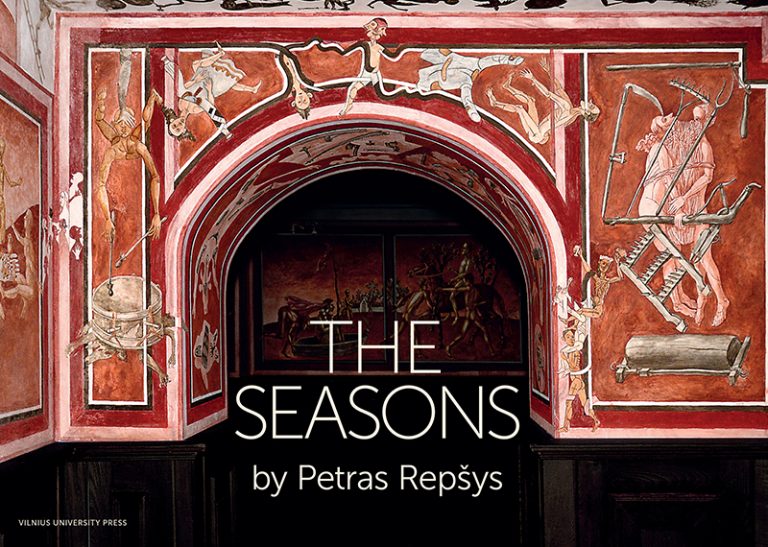Aesopica
25.00€
The bilingual book ‘Aesopica’ documents and extends Rūta Junevičiūtė’s research on the Aesopian language and the influence of political censorship to contemporary collective body, first presented in 2020 as the eponymous solo exhibition at the National Gallery of Art and as a permanent outdoor installation at the Rupert Art Center, Vilnius. Taking as a starting point the historical phenomenon of Aesopian language, which was widespread in Lithuanian culture during the Soviet era, and in parts of the Russian Empire as early as the 19th century, Junevičiūtė aims to investigate the interrelationship between generations, the gray zones of collective identity creation and the processes of (un)censoring the archives of our bodies.
Aesopian language – a term coined after Ancient Greek fabulist Aesop (gr. Aísōpos), is a type of cryptic communication system, where a text has several layers of meaning often contradictory to each other and which seek to convey official and subversive hidden meanings simultaneously. It is usually employed under conditions of omnipresent state censorship to communicate officially forbidden or taboo subjects and opinions. As a system it contains three members – an author, a censor, and a reader. It uses various modes of circumlocution and euphemisation, innuendo and poetic paraphrasing, which can also be seen as an aesthetic style. It has been advocated for artistic benefits as poetics of omissions, concealment, and travesty. On the other hand, it has been criticized as a sign of conformity and humiliation. In Lithuania, after the fall of the Soviet Union, it has been popularly regarded as a position of dissent, but such an interpretation received criticism from contemporary scholars. “Such a mode of expression is probably as old as censorship itself” – a historian told us.
The publication consists of the artists’ texts presented in the exhibition ‘Aesopica’, a discussion between Lithuanian academics who studied Aesopian language and the influence of censorship to the cultural forms, thematic essays written for the catalog by art critic Edgaras Gerasimovičius, artist Goshka Macuga and dramaturge Ana Vujanović, and the article by poet, writer, dissident Tomas Venclova, first published in 1983.
‘In a world ablaze with multiple crises, aesthetics are increasingly intertwined with narratives about ethics. Junevičiūtė’s “Aesopica'” is a prime example of this multidimensional fusion of ethics and aesthetics. The book not only comprises an intriguing collection of historical texts by both renowned and emerging authors from Central and Eastern Europe, but also is in itself a textual and visual discourse, that extends the author’s exhibition and works into a broader context.’ – writer and curator Valentinas Klimašauskas
Rūta Junevičiūtė is an artist and researcher from Vilnius with partial base in Amsterdam. With a background in art history and theory, fine arts, dance and choreography, she holds degrees from Vilnius Academy of Arts and Amsterdam Academy of Theatre and Dance (School for New Dance Development). For the past years she has been exploring her interest in the body as a sentient archive, intergenerationality and holistic healing. Her recent work has been showcased at Veem House of Performance, Frascati Theatre, de Brakke Grond Theatre in Amsterdam, Vilnius Biennial of Performance Art, the Lithuanian National Gallery of Art and Rupert in Vilnius.
Text contributors: Alfonsas Andriuškevičius, Edgaras Gerasimovičius, Rūta Junevičiūtė, Goshka Macuga, Anastasia Sosunova, Grėtė Šmitaitė, Tomas Venclova, Ana Vujanović.
Participants of the discussion: Paulius Jevsejevas, Rūta Junevičiūtė, Valdemaras Klumbys, Loreta Mačianskaitė, Martynas Mankus, Julija Reklaitė, Dalia Satkauskytė, Dainius Vanagas.
Language editors: Dangė Vitkienė, Aira Niauronytė, Gemma Lloyd.
Translators: Alexandra Bondarev, Erika Lastovskytė, Justinas Šuliokas, Mantė Zagurskytė-Tamulevičienė, Aistis Žekevičius.
Illustrations: Rūta Junevičiūtė
Graphic design: Gailė Pranckūnaitė.
Publication is bilingual, in Lithuanian and English, p. 144. Edition: 250.
Publisher: Ariel Ink, 2023
Partner of the project: National Gallery of Art.
This publication is financed by the Lithuanian Council for Culture, DAS Research Development fund.














